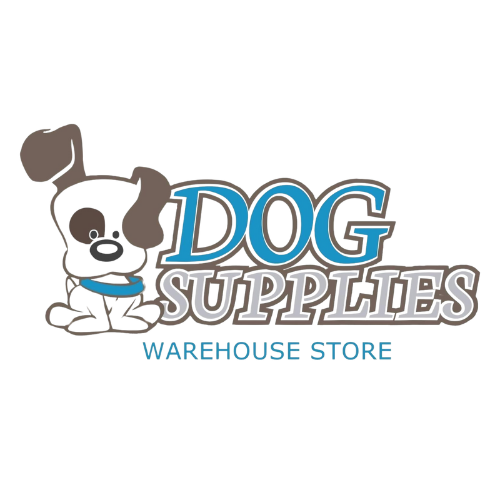Dog food allergies are a growing concern for pet owners as more dogs suffer from intolerances to common ingredients. For dog lovers, ensuring their furry companions enjoy a balanced, nutritious, and allergy-free diet is paramount. But finding the right formula can be overwhelming due to the variety of dog foods on the market. This guide will help you identify common allergens in commercial dog foods and provide recommendations for safe, allergy-friendly alternatives. Let’s explore how to keep your dog’s diet free from harmful allergens while maintaining optimal health.
What Are Dog Food Allergies?
Dog food allergies often manifest in uncomfortable symptoms like itching, digestive issues, and chronic ear infections. However, these symptoms are sometimes confused with food intolerances, which aren’t as severe but still affect your dog’s wellbeing.
A food allergy occurs when your dog’s immune system reacts negatively to certain proteins in their diet, triggering an allergic response. This can cause symptoms such as:
- Persistent scratching and licking
- Red, inflamed skin
- Vomiting or diarrhea
- Frequent ear infections

In contrast, food intolerances usually result in digestive disturbances like gas or bloating but don’t involve the immune system. Distinguishing between the two can be challenging, but understanding the symptoms can help pet owners make more informed choices when selecting dog food.
Common Allergens in Commercial Dog Foods
Proteins That Commonly Cause Allergic Reactions
One of the leading causes of dog food allergies is protein-based allergens. Dogs are commonly allergic to proteins found in:
- Beef
- Chicken
- Lamb
- Dairy
These proteins are often the primary ingredients in many dog food brands, making them frequent triggers of allergic reactions. According to studies, beef and dairy account for the majority of dog food allergies, and owners may notice symptoms when their pets consume these regularly.

The overexposure to certain proteins can lead to the development of allergies over time. For dogs that display symptoms such as itching, gastrointestinal upset, or chronic ear infections after eating foods with these ingredients, switching to alternative proteins is crucial.
Grains and Carbohydrates: Another Source of Allergies
While proteins are the most common allergens, grains and carbohydrates such as wheat, soy, and corn can also cause reactions. Dogs can develop intolerances or allergies to these ingredients, leading to skin issues, itching, and digestive distress.
These grains are often used as fillers in lower-quality dog foods, providing bulk without significant nutritional benefits. Some dogs are more sensitive to grains, making grain-free diets an attractive alternative for many pet owners.
How to Identify Allergens in Dog Food Labels
Reading Ingredient Labels: What to Watch For
The key to avoiding allergens is knowing how to read dog food labels effectively. Many pet owners are unaware that certain ingredients can be listed under various names, making it harder to identify potential allergens.
When evaluating a dog food label, pay close attention to the first five ingredients as they make up the bulk of the product. Ingredients are listed in descending order by weight, so if beef or chicken is listed first, it is the primary ingredient.
Here are some ingredients to look out for:
- Hydrolyzed proteins: These are often used in hypoallergenic dog foods, as they are broken down into smaller pieces, making them less likely to cause an allergic reaction.
- Meat by-products: These can include a mix of different protein sources, some of which may trigger allergies.
- Wheat gluten: Often used as a binder, it can cause allergic reactions in some dogs.

By recognizing these ingredients, you can make informed decisions to avoid allergens and select safer alternatives.
Recognizing Additives That Can Cause Allergies
In addition to whole ingredients, additives and preservatives in dog food can also cause allergic reactions. Ingredients like artificial coloring, flavor enhancers, and preservatives such as BHA, BHT, and ethoxyquin have been linked to allergic responses in dogs.
Natural preservatives like tocopherols (Vitamin E) or rosemary extract are better alternatives for sensitive dogs. Selecting foods free from artificial additives will significantly reduce the chances of allergic reactions.
Recommended Alternatives for Allergy-Prone Dogs
Novel Proteins: Less Likely to Trigger Allergies
If your dog has been diagnosed with a protein allergy, switching to a food with novel proteins is often the best solution. Novel proteins are those that your dog hasn’t been previously exposed to, reducing the risk of triggering an allergic reaction. Some examples of novel proteins include:
- Bison
- Venison
- Rabbit
- Duck
- Fish
These proteins are less commonly found in dog foods and can be a great alternative for dogs who are allergic to beef, chicken, or lamb. Additionally, these proteins are often found in limited ingredient diets (LID), which minimize the number of ingredients in the food to reduce the chances of allergies.
Switching to a novel protein diet requires a gradual transition to avoid gastrointestinal issues. Consult your veterinarian to ensure the protein source suits your dog’s health and dietary needs.
Limited Ingredient Diets (LID): A Simple Solution
For dogs with food sensitivities, limited ingredient diets are an excellent option. These foods are designed with a minimal number of ingredients to reduce exposure to potential allergens. They typically include a single protein source and a few essential nutrients, making it easier to identify which ingredient is causing a reaction.
Popular LID dog food brands include:
- Natural Balance LID
- Blue Buffalo Basics
- Canidae Pure
These formulas are specifically designed to cater to dogs with allergies and provide balanced nutrition without unnecessary additives.
Grain-Free Diets: Are They Suitable for Allergic Dogs?
Grain-free diets have become a popular solution for allergy-prone dogs, as many believe grains like wheat, corn, and soy contribute to food allergies. However, grain-free diets are not necessarily hypoallergenic.
While some dogs benefit from the removal of grains in their diet, it’s essential to ensure the formula remains nutritionally balanced. Many grain-free dog foods replace grains with alternative carbohydrates like sweet potatoes, peas, or lentils, which can still trigger allergies in sensitive dogs.
If your dog has grain allergies, selecting a grain-free food is a good idea. However, always ensure that the food contains high-quality protein sources and other essential nutrients.
Conclusion
Finding the right allergy-friendly dog food is crucial for maintaining your pet’s health and happiness. By identifying common allergens like beef, chicken, dairy, and grains, and opting for safer alternatives such as novel proteins, limited ingredient diets, and grain-free formulas, you can significantly improve your dog’s quality of life. Always consult with your veterinarian before making dietary changes to ensure your dog’s nutritional needs are met.
With the right knowledge, you can take control of your dog’s diet, ensuring they enjoy meals free from harmful allergens while thriving on safe, healthy ingredients.

After 5 years in a high pace business management role, I partnered with an e-commerce developer to start building Dog Supplies Warehouse.
Our number one goal is to make sure all products are managed and delivered to our customers door fast and accurately.
